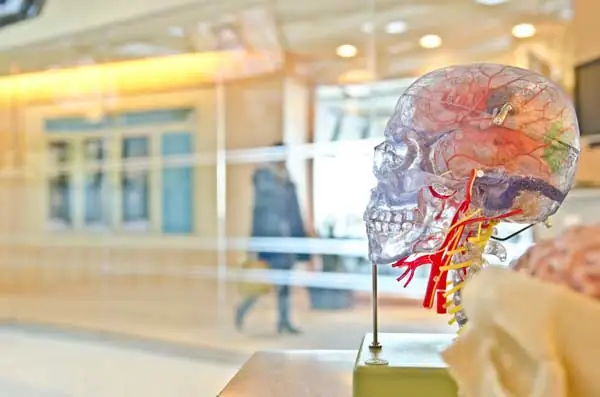Primary Types of Headaches: The Facts
[vc_row type=”in_container” full_screen_row_position=”middle” scene_position=”center” text_color=”dark” text_align=”left” overlay_strength=”0.3″ shape_divider_position=”bottom”][vc_column column_padding=”no-extra-padding” column_padding_position=”all” background_color_opacity=”1″ background_hover_color_opacity=”1″ column_shadow=”none” column_border_radius=”none” width=”1/1″ tablet_text_alignment=”default” phone_text_alignment=”default” column_border_width=”none” column_border_style=”solid”][vc_column_text]
Nearly everyone has a headache from time to time. In fact, according to the World Health Organization, approximately 47 percent of the world’s adult population has had a headache within the last year. It’s believed that chemical activity in your brain, nerves, or blood vessels in your head, muscles in your head and neck—or some combination of these factors—play a role in creating the pain signals associated with headaches.
The International Headache Society has established a comprehensive classification that includes more than 150 headache categories. “Primary” headaches are headaches that are actually conditions and not the symptom of an underlying condition. The most common types of primary headaches are tension headaches, migraines, cluster headaches, and chronic daily headaches.
Tension Headache
Tension headaches are a common and uncomfortable form of headache that is caused by the tightening of muscles in various locations throughout the body. These headaches can result from a number of different factors, usually related to stress or overuse of certain muscles, such as those in the neck and jaw.
Additionally, research has shown that women are far more likely to experience tension headaches than men, with women being twice as likely to suffer from them. Although the underlying causes of these headaches can be difficult to pinpoint and often require medical attention, many treatments exist that can help to manage and alleviate the discomfort associated with this condition.
Whether it involves making lifestyle changes or seeking treatment from a qualified healthcare professional, taking action to address tension headaches is key in preventing their occurrence and improving one’s overall quality of life.
Migraine Headache
Migraine headaches are a type of headache that features moderate to severe pain. The pain is often described as throbbing, pounding, or pulsing, and can involve vision changes, sensitivity to sound or light, nausea, and loss of appetite.
Migraines typically last for four to 72 hours, and more than 90 percent of migraine sufferers are unable to work or function normally during their migraine. Migraines are a significant source of lost productivity, estimated to cause more than 157 million work and school days every year. There is no cure for migraines, but there are a variety of treatments that can help to relieve the pain and other symptoms.
Cluster Headache
Cluster headaches are a severely painful and debilitating type of headache that is characterized by intense, sharp pain located behind one eye or in the eye region. They typically occur multiple times per day, with episodes lasting anywhere from 2 weeks to 3 months at a time. After these episodes are resolved, cluster headaches may disappear completely for months or even years at a time.
Although relatively rare, chronic daily headaches may be more persistent, occurring every day for at least three months. In many cases, it has been suggested that chronic daily headaches may evolve from tension-type headaches or be caused by neck injuries or general tiredness.
Occipital neuralgia
Occipital neuralgia is a type of primary headache that is caused by inflammation or irritation of the occipital nerves. These nerves run from the top of the spinal cord at the base of the neck, through the scalp, and up to the head.
Occipital neuralgia is characterized by sharp, jabbing, and electric pain in these nerves, often accompanied by aching, burning, or throbbing pain in the head. Other symptoms include sensitivity to light and a tender scalp.
Reduce Flare-Ups
In order to effectively manage occipital neuralgia and reduce flare-ups of pain and other symptoms, it is important to take steps to identify and avoid potential triggers for inflammation or irritation in these nerves. This may include avoiding excessive exposure to bright lights or staying away from sources of direct heat on the scalp, such as hot showers or direct sunlight.
Additionally, practicing stress reduction techniques like deep breathing exercises or regular acupuncture sessions can help keep occipital neuralgia under control. With proper management, it is possible to prevent unnecessary episodes of debilitating pain and discomfort caused by occipital neuralgia.
Contact PMIR to discuss types of headaches
Overall, it is clear that headaches can be caused by a variety of different factors. However, there are also many different treatment options available that can help to relieve the pain and other symptoms associated with headaches.
If you are suffering from frequent or chronic headaches, consult PMIR in order to determine the best course of treatment for your individual situation. With the right management strategies, you can effectively reduce the frequency and severity of headaches, and regain control over your health and well-being.




